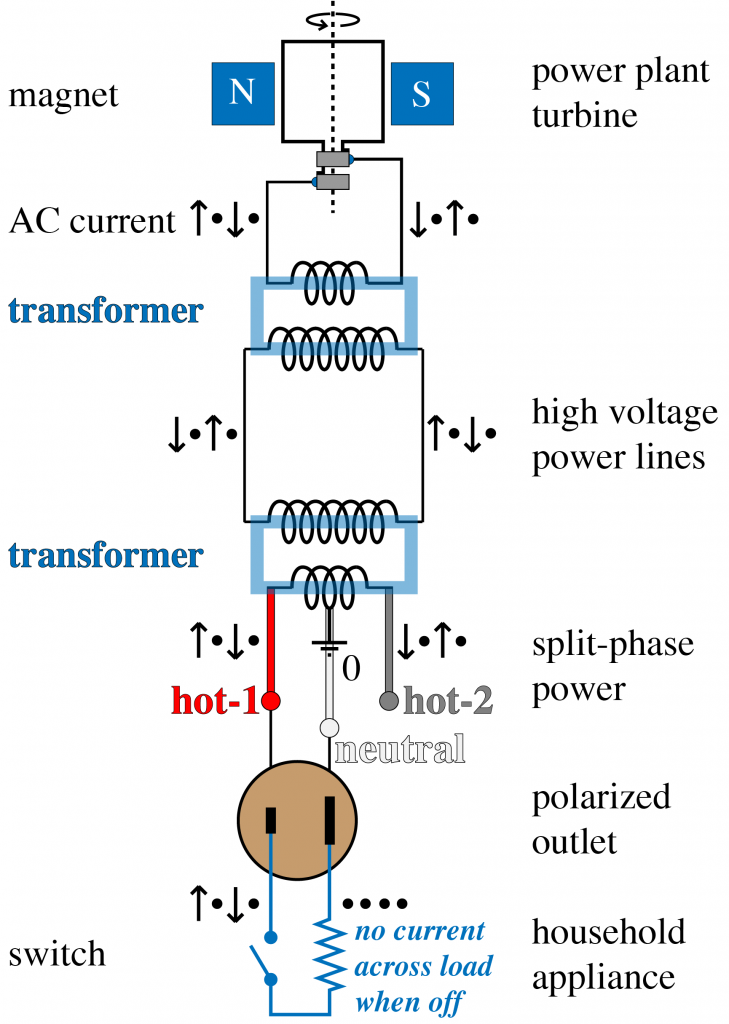As I kid, I used to help my dad with electrical wiring projects (among other things). I learned that home electricity was “hot & cold”, like water in pipes — or at least, that’s how I understood the explanation. Later I learned that home electricity uses alternating current (AC) rather than direct current (DC), and the plumbing analogy seemed confusing, even if I substituted “hot & neutral” for “hot & cold”. I was especially baffled by polarized outlets, with a smaller “hot” slot and a larger “neutral” slot. What possible difference could that make, given that AC was simply sloshing the current back and forth (with electrons oscillating only ~ 0.2 µm in the Drude model)?
I understood how Maxwell’s equations describe electromagnetism long before I understood polarized outlets. The key is that north American homes tap transformers in three places to get a “neutral” and two “hots” that alternate but oppositely!
Starting at the top of the figure, a power plant wire loop rotates in a magnetic field inducing AC according to Faraday’s law of induction (one of Maxwell’s equations). The first transformer increases the voltage and lowers the current for energy efficient long distance transmission (again as described by Faraday). The second transformer decreases the voltage and increases the current for safe residential use. In north American homes, which use split-phase power, three wires enter the home: a neutral wire from the center of the final transformer coil, which is zeroed or grounded, and two hot wires from the ends of the coil, where current oscillates sinusoidally but 180° out of phase. Connecting a lamp across a hot and neutral wire harnesses a root-mean-square 120 volts of energy per charge, while connecting an oven across the two hots harnesses RMS 240 V. The polarized outlet forces appliances to connect their loads to neutral and their switches to one of the hots, so no current flows across their loads when the appliances are off, which is both safe and efficient.

How polarized plugs work in North American homes. Arrows and dots suggest the sinusoidal phasing of the currents.

Thanks, Mark! I enjoy reading your posts as well.